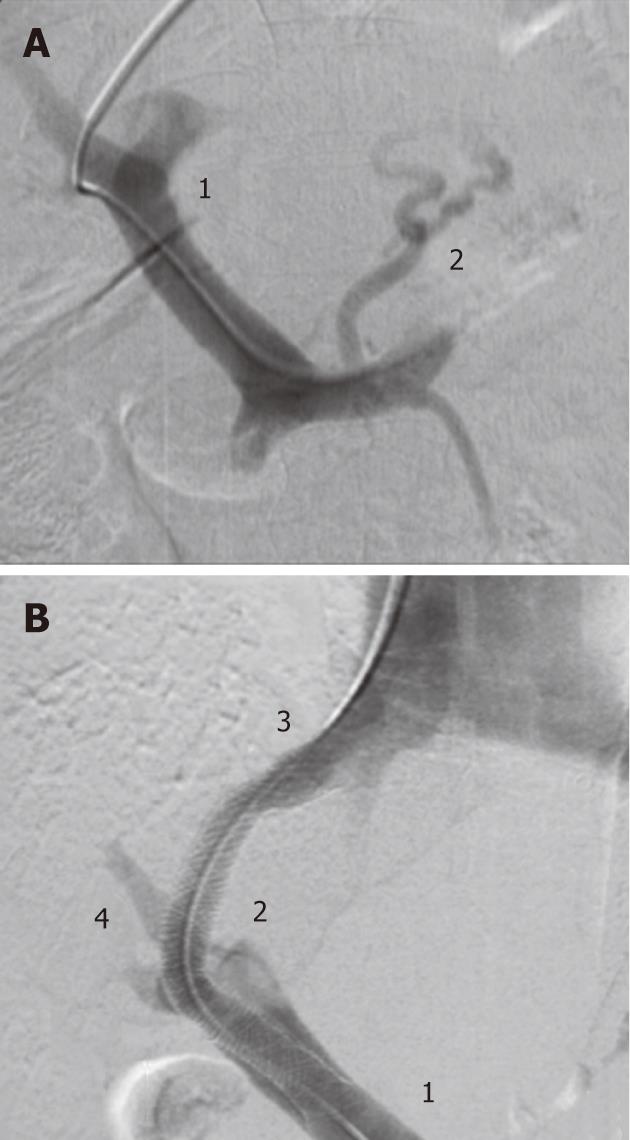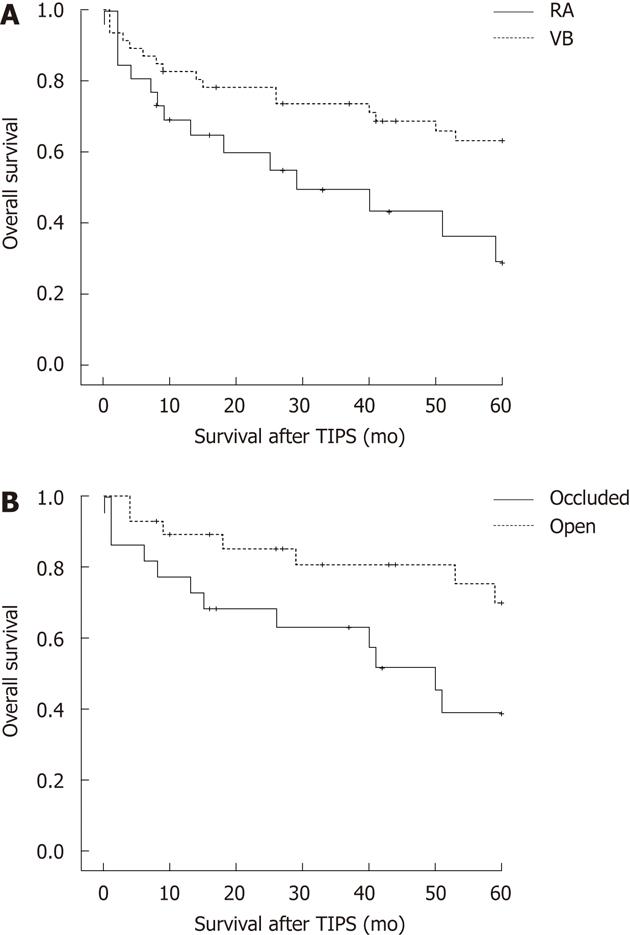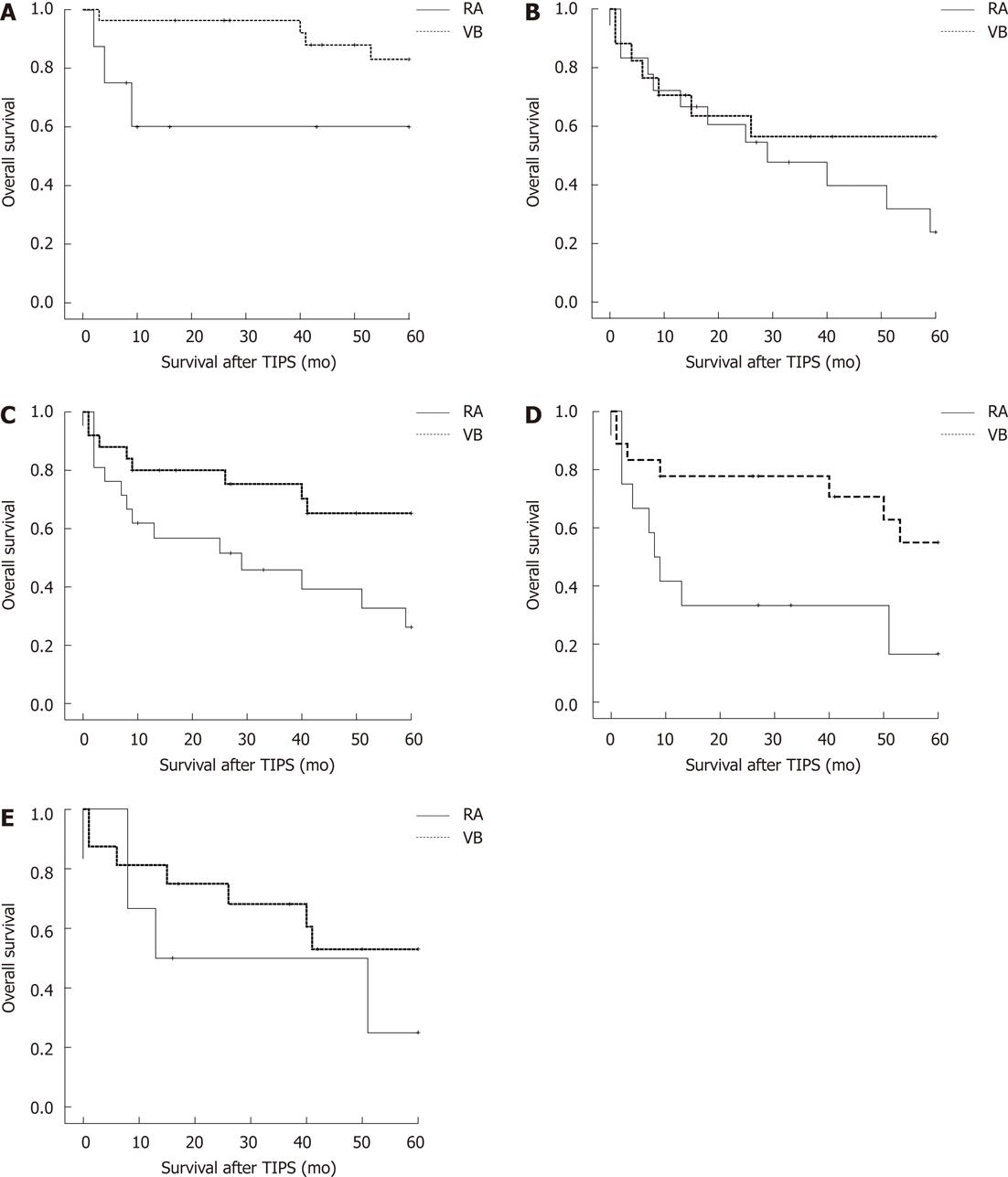Copyright
©2012 Baishideng Publishing Group Co.
World J Gastroenterol. Oct 7, 2012; 18(37): 5211-5218
Published online Oct 7, 2012. doi: 10.3748/wjg.v18.i37.5211
Published online Oct 7, 2012. doi: 10.3748/wjg.v18.i37.5211
Figure 1 Fluoroscopic images showing transjugular intrahepatic portosystemic shunt placement procedure.
A: Portogram after catheterisation of the portal vein, showing perfusion of the portal vein system (1) and oesophageal varices (2); B: Portogram after transjugular intrahepatic portosystemic stent placement. Contrast can be seen in the portal vein (1), through the shunt (2) flowing into the hepatic vein and inferior vena cava (3). Decompression of the portosystemic pressure can be seen in reduced contrast in the portal branch (4). The varices can no longer be identified in the fluoroscopic image.
Figure 2 Kaplan-Meier survival analysis of patients after transjugular intrahepatic portosystemic shunt placement.
A: In patients with initial ascites as indication for transjugular intrahepatic portosystemic stent (TIPS), survival is significantly shorter than that in patients with variceal bleeding [refractory ascites (RA) vs variceal bleeding (VB), log rank test P = 0.009]; B: In patients with occluded stent at first fluorographic control, survival is significantly shorter than that in patients with open stent (occluded vs open, log rank test P = 0.027).
Figure 3 Kaplan-Meier survival analysis of patients after transjugular intrahepatic portosystemic shunt placement.
A: Subgroup analysis with patients having a model for end-stage liver disease score (MELD) < 10: Significant difference in overall survival relating to indication [refractory ascites (RA) vs variceal bleeding (VB) group, log rank test P = 0.031]; B: Subgroup analysis with patients having a MELD score > 10: No significant difference in overall survival relating to indication (RA vs VB group, log rank test P = 0.274); C: Subgroup analysis with patients with CHILD B or C cirrhosis: Significant difference in overall survival relating to indication (RA vs VB group, log rank test P = 0.021); D: Subgroup analysis with patients age > 65 years: Significant difference in overall survival relating to indication (RA vs VB group, log rank test P = 0.021); E: Subgroup analysis with stent occlusion at first control: No significant difference in overall survival relating to indication (RA vs VB group, log rank test P = 0.289).
- Citation: Heinzow HS, Lenz P, Köhler M, Reinecke F, Ullerich H, Domschke W, Domagk D, Meister T. Clinical outcome and predictors of survival after TIPS insertion in patients with liver cirrhosis. World J Gastroenterol 2012; 18(37): 5211-5218
- URL: https://www.wjgnet.com/1007-9327/full/v18/i37/5211.htm
- DOI: https://dx.doi.org/10.3748/wjg.v18.i37.5211











